Contents
- Traditional and Modern Eating Practices
- Vegetarianism and Dietary Restrictions Across Communities
- Sindhi Food in Ulhasnagar
- Meals of the Day
- How Spicy is the Food?
- Local Produce
- Pickles
- Baby Food and Tiffin Boxes
- Festival and Seasonal Delicacies
- Prasad and Bhandara
- Culinary Traditions
- Misal Pav
- Sol Kadhi
- Pav Bhaji
- Alu Vadi
- Sabudana Vada
- Upasachi Misal
- Eating Out
- Mamledar Misal
- Kunj Vihar Restaurant
- Maha Janata Bakery
- Hotel Sanman
- Hotel Sai Prasad
- Shivraj Hotel
- Other Restaurants
- Local Worker Cooperatives / Self Help Groups
THANE
Food
Last updated on 22 July 2025. Help us improve the information on this page by clicking on suggest edits or writing to us.
Marathi food is prominent in Thane, with various Marathi-speaking communities contributing to the local cuisine. These communities include Marathas, Brahmins, CKP, Koli Waanis, and Pathare Prabhus, each bringing their touch. Thane also has indigenous communities living in scattered corners of the district with their own unique cuisine, which is not very explored. In Thane City and Navi Mumbai, with their growing cosmopolitan population, various outside cuisines have found a place in the staple dishes of the region.
Traditional and Modern Eating Practices
Traditionally, Thane enjoyed a diet centered around staples like rice, lentils, and vegetables, seasoned with Maharashtrian flavors. Ingredients such as peanuts, coconut, kokum, and tamarind were frequently used to add tanginess to curries and lentil dishes. Comfort foods like Zunka, Varan Bhaat, and bhakri were household staples. In earlier times, the diet was heavily influenced by local ingredients, with fish and seafood being vital for coastal communities. Foraging for wild greens like Pendhri and Mokashi was common. Each generation saw shifts in dietary preferences; for instance, the introduction of Nachani Bhakari and the inclusion of meats like rabbit in the diet.
In recent years, Thane's proximity to Mumbai has led to a diverse restaurant scene offering a wide range of culinary experiences, from North Indian curries to international cuisines. The fast-paced modern lifestyle has popularized fast food outlets and tiffin services. Street food remains an integral part of Thane's food culture, with traditional items like vada pav coexisting with global trends such as shawarma and boba. Domestic cooking has also evolved, with more balanced gender roles in meal preparation and the adoption of time-saving cooking methods and appliances. The inclusion of dishes like sandwiches, parathas, noodles, and fried rice in home-cooked meals reflects the growing cosmopolitan influence on Thane's food culture.
Vegetarianism and Dietary Restrictions Across Communities
Most Maratha communities in Thane are non-vegetarian, with a smaller vegetarian population comprising Brahmins, Jains, and Marwaris. However, even some traditionally vegetarian Brahmin families have begun incorporating non-vegetarian dishes in their meals.
Sindhi Food in Ulhasnagar
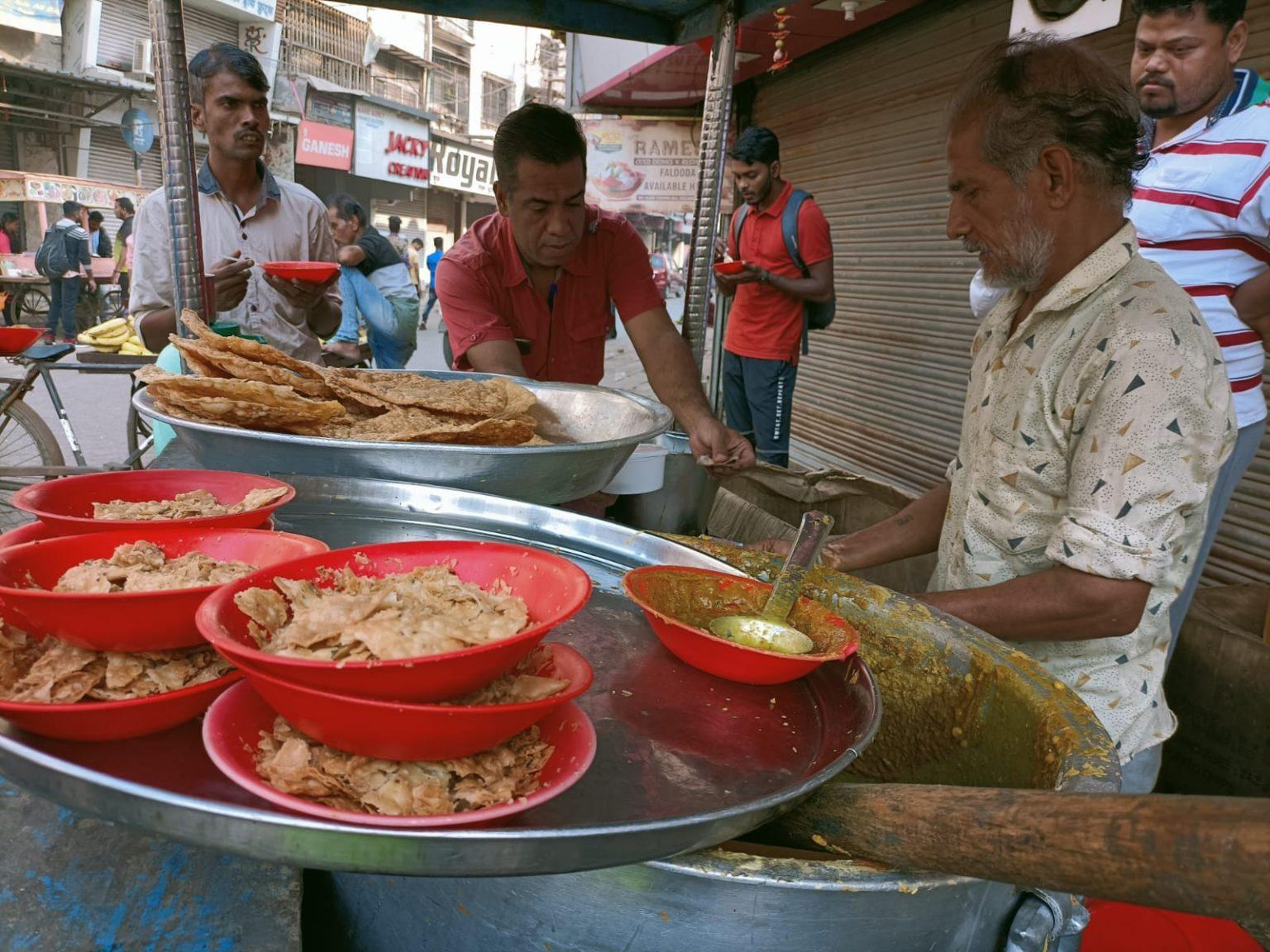
In the late 1970s, Ulhasnagar was primarily inhabited by Sindhi Hindu refugees from Sindh, Pakistan, eventually becoming the largest Sindhi enclave in India. By 2010, the city's Sindhi Hindu population was estimated to be around 400,000. As a result, Sindhi cuisine plays a significant role in the town's culinary landscape. Street food in Ulhasnagar offers a variety of authentic Sindhi delicacies, including Dal Pakhwan, Chole Patties, Butter Papdi, Kheechas, and Bhee Pakodas, providing a true taste of Sindhi flavors.
Meals of the Day
In a typical Marathi household, the day often begins with a substantial breakfast featuring dishes such as Poha, Upma, Idli, Dosa, Paratha, or the local favorite, Misal Pav. Lunch, considered the main meal of the day, typically consists of poli, bhaaji, rice, and dal, forming a balanced and nutritious meal. Evening snacks are a popular custom, with locals enjoying savory items like Kanda Bhajji, Vada Pav, and the fusion dish Chinese bhel, often accompanied by a cup of chai. Dinner usually includes dishes made with fresh seafood or chicken, served with rice or bhakri. Traditional post-meal digestives such as Sol Kadhi and various sweets are common. In recent years, the practice of consuming mouth fresheners after meals has gained popularity, with varieties including amaranth and coriander seeds being particularly favored.
How Spicy is the Food?
![Mamledar Misal[1]](/media/culture/images/maharashtra/thane/food/mamledar-misal1-791ccdcd.png)
Thane is known for its love of spicy food, with dishes like the famously spicy Mamledar Misal. However, spice preferences can vary across different communities in the region. Communities around Wada and Murbad too prefer food that is heavy on spices.
Local Produce
![Valagan Fish[2]](/media/culture/images/maharashtra/thane/food/valagan-fish2-f01d7637.png)
While large-scale farming is limited within the city center, surrounding areas such as Murbad and Shahapur contribute to local rice production. Seasonal vegetables, including tomatoes, onions, and leafy greens, are typically sourced from farmers' markets and the city's outskirts. The dairy industry is represented by farms around Patlipada and Uthalsar, providing fresh milk and dairy products. Thane's coastal location influences its seafood availability, with Thane creek offering some fish, though water quality concerns persist. The region's fish market is diverse, categorized into wet fish and dry fish. Wet fish varieties include Columbia, Cuttle, Surmai, Paplet, Bombil, Shingada, Halwa, Jeetara, Vav, and Crab. A notable seasonal fish is the Sparrow or Chimni, also known as Valagan fish, which is abundant during the rainy season. Dry fish, primarily consumed during the monsoon when fishing activities cease due to the breeding season, includes varieties like Jawla, Sukat, Bombil, Dande, Vav, Mandeli, and Bangra. As urbanization progresses, traditional agricultural practices are evolving. There is a growing interest in sustainable urban farming methods, including rooftop gardens. Additionally, historical salt pans in the region, though diminishing, represent a traditional local industry.
Pickles
Mango pickle, with its tangy and spicy profile, is perhaps the most popular, followed closely by the fiery chili pickle and the refreshing lemon pickle. Vegetable-based options like carrot and mixed vegetable pickles are common, while the amla (Indian gooseberry) pickle, locally known as 'alla pickle', is valued for both its taste and nutritional benefits. Pickles also include some distinctive varieties such as haldi-orange ginger pickle and dry fish pickle. The muramba pickle offers a sweeter alternative, bridging the gap between preserves and traditional pickles.
Baby Food and Tiffin Boxes
Infant nutrition begins with breast milk and formula, gradually transitioning to solid foods as the child grows. For babies around one year old, soft dal rice and rice water are common first foods. Traditional baby foods include nachani satva, diluted kheer, mashed vegetables, and soft rice with broth. As children start school, there's an increasing focus on nutritious tiffin boxes. These often contain fresh fruits, salads, and balanced meals like chapati with vegetables. In government schools, meals are provided under school feeding programs, typically including dishes like khichdi, dal rice, and other nutrient-rich foods. Poli-bhaji and rolls too are common at lunch. Many schools now implement day-wise tiffin schedules to ensure children bring varied and healthy lunches. This approach reflects a growing awareness of the importance of proper nutrition in children's diets, balancing traditional foods with modern nutritional knowledge.
Festival and Seasonal Delicacies
![Sheer Khurma[3]](/media/culture/images/maharashtra/thane/food/sheer-khurma3-f8109d69.png)
During Ganesh Chaturthi, Ukadiche Modak, a sweet dumpling with coconut and jaggery filling, takes center stage. Other popular sweets include Jalebi, Pedha, Shrikhand, Puran Poli, and Basundi. Seasonal delicacies are equally important, with summer bringing Aamras and Kairi Panha, while the monsoon sees a preference for butta (roasted corn cob). Each festival brings its unique foods: Krishna Jayanti is marked by consuming milk and Poha at midnight; Diwali features an array of sweets like Ladoos, Karanji, Chakalya, Shankarpali, and savory Chivda; and Ramzan is celebrated by making Sheer Khurma. Other notable festival foods are Patole for Nag Panchami, Shrikhand Puri for Gudi Padwa, milk and dates for Mahashivratri, and Tilgul Laddu for Sankranti. Holi is celebrated with Puran Poli, while Maghi Ganpati (in February) features Ukadiche Modaks and Sheera as Mahaprasad.
Prasad and Bhandara
Various mandirs across the district offer distinct prasads: Shiv mandirs typically provide Panchamrit and dates, Hanuman mandirs are known for Motichur Ladoo, while the Ganeshpuri Mandir offers Bundi Ladoo. The Ram Mandir in Anjurdive is notable for its Sunthi-Prasad. Bhandaras are a significant aspect of community life, especially in rural areas. In Kevani-Dive village, bhandaras are held near the Gavdevi Mandir, bringing the community together. The village also hosts bhandaras for religious processions (palkhis) such as those of Saibaba and Ekviraai, as well as during the Sant Dnyaneshwar Harinam week. These events, lasting several days, involve communal cooking and are supported by donations from villagers. A unique feature of the region is the public weddings organized at Ganeshpuri, where couples receive blessings from Sadananda Maharaj. The Mandir complex includes an annachhatre (free food distribution center) that provides daily meals to devotees. Regular bhandaras are also common near mandirs along highways, serving as both religious and social gatherings.
Culinary Traditions
Misal Pav
Misal Pav is a beloved Maharashtrian street food that has become synonymous with Thane's culinary scene. It consists of a spicy curry made with sprouted moth beans, topped with farsan, onions, lemon, and sev, and served with soft pav. The dish is highly appreciated by locals and is often featured in various restaurants across Thane, such as Jogeshwari Misal and Mamledar Misal, which are known for their authentic flavors and unique preparations
Sol Kadhi
![Sol Kadhi[4]](/media/culture/images/maharashtra/thane/food/sol-kadhi4-c096937e.png)
Sol Kadhi is a refreshing digestive drink that is an integral part of traditional Maharashtrian meals, especially close to the coastal regions. It is made by combining kokum or coconut milk with spices like garlic, green chilies, and mustard seeds. Sol Kadhi is often served chilled after a meal to aid digestion and provide a tangy, cooling finish.
Pav Bhaji
Pav Bhaji consists of a spicy, thick vegetable curry made with potatoes, onions, tomatoes, and a blend of aromatic spices, served with soft pav that are toasted in butter. The dish is often garnished with chopped onions, lemon wedges, and coriander leaves.
Alu Vadi
Alu Vadi is a traditional Maharashtrian snack that is popular in Thane. It is made by rolling colocasia leaves (alu) with a spiced coconut and jaggery filling, and then steaming or frying them. Alu Vadi is often served as a tea-time snack or as part of a festive spread.
Sabudana Vada
Sabudana Vada is a delicious deep fried snack made from sabudana (tapioca pearls), potatoes, peanuts, and spices. It is a popular fasting food in Thane, often consumed during religious festivals and occasions. The vadas are crispy on the outside and soft on the inside.
![Sabudana Vada[5]](/media/culture/images/maharashtra/thane/food/sabudana-vada5-87de9a4a.png)
Upasachi Misal
Upasachi Misal is a unique variation of the classic Misal Pav that is prepared during fasting periods. Instead of the usual spicy curry, upasachi Misal features a lighter, tangy-sweet gravy made with kokum, jaggery, peanuts and spices. It is served with pav and garnished with potato chivda, onions, and coriander leaves.
![Upasachi Misal[6]](/media/culture/images/maharashtra/thane/food/upasachi-misal6-016ad9b8.png)
Eating Out
Thane and Navi Mumbai boast a bustling eating-out culture, offering a wide range of dining options from street food to family diners, sports bars, and fancy fine dining experiences. Recently, the city has seen a rise in the number of non-vegetarian thali restaurants, catering to the region's love for robust, flavorful dishes from different parts of Maharashtra, featuring fish varieties like surmai and pomfret. Thane district is home to many popular food streets known as Khau Gallis. These include Gokhale Road, Bhiwandi, Murbad, Kalyan, Dombivli, and Titwala Khau Gallis, which offer various types of street food. In Dombivli Khau Galli, you can find sandwiches, pizzas, and Indian snacks, with Goli Vada Pav being a famous spot. Kalyan Khau Galli features foods like Vada Pav, Bhajiyas, Momos, and Shawarma. Popular places in Kalyan include Laxmi Vada Pav and Sai Krupa Chinese.
Mamledar Misal
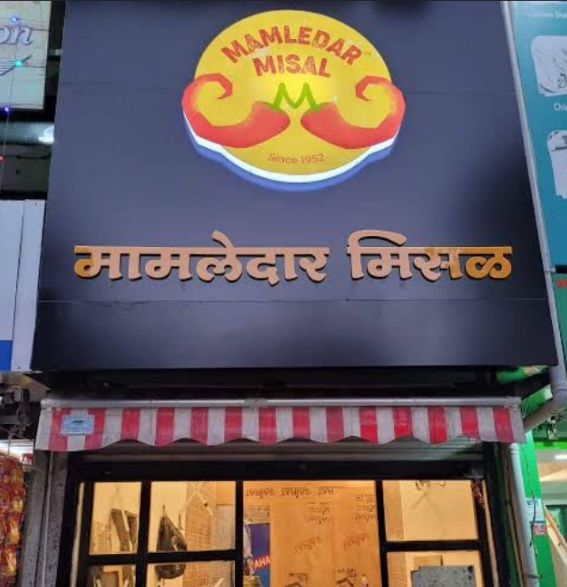
Mamledar is a beloved culinary institution in Thane, with a history dating back to 1952. It was founded by the Murdeshwar family, who moved to Thane from Karwar and started selling Misal and snacks from a cart near the tehsildar's office. His Misal Pav soon became a specialty, leading to the establishment's popularity and its iconic name. Now in its third generation of family management, Mamledar Misal is renowned for its spicy flavors, offering three levels of heat: light, medium, and very spicy. The business has expanded beyond Thane to Mumbai and Navi Mumbai, maintaining a reputation for cleanliness across all locations.
Kunj Vihar Restaurant
Kunj Vihar Vada Pav, located in Thane's Vartak Nagar area, is famous for its tasty and flavorful Vada Pav, a popular street food in Maharashtra. People love it for its crispy outside, soft potato filling, and spicy chutney. It's affordable and has earned a loyal fan base over the years for its consistent quality. If you are a Vada Pav fan in Thane, this spot is a must-visit for an authentic and satisfying street food treat.
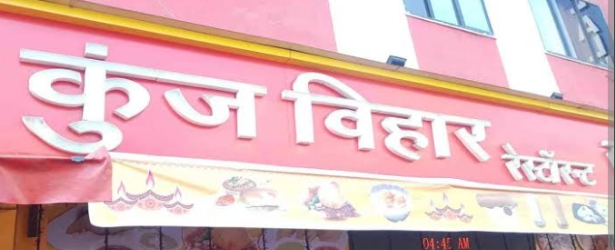
Maha Janata Bakery
The Maha Janata Bakery in Thane West is well-known for its freshly baked bread, cakes, and pastries. It's a favorite among locals because of its delicious baked goods and friendly service.
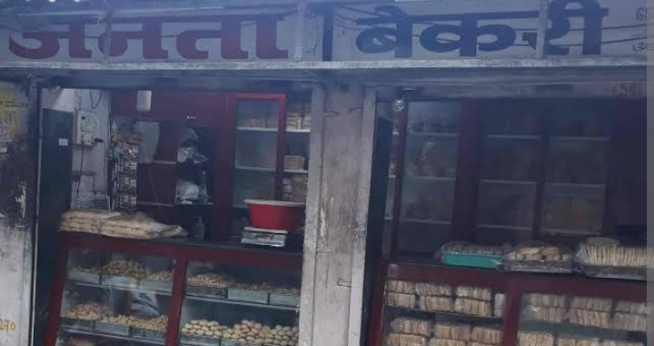
Hotel Sanman
Hotel Sanman, near Thane Station, is famous for its tasty South Indian food, especially dosas and idlis. They've been serving authentic South Indian cuisine for a long time.
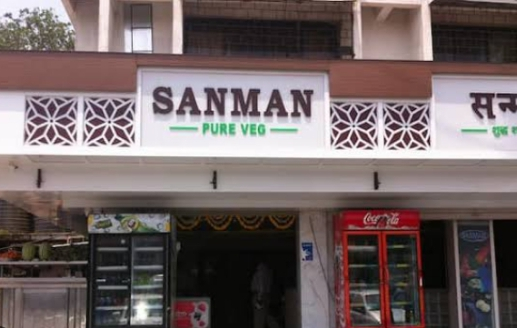
Hotel Sai Prasad
Hotel Sai Prasad is famous for its home-style cooking and friendly service. It's a popular choice for authentic Maharashtrian thalis, which include a variety of vegetarian dishes like sabzis, dal, rice, and rotis. Locals love it for its hearty and affordable meals.
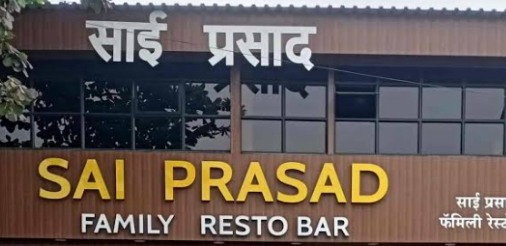
Shivraj Hotel
Shivraj Hotel has been around for decades, serving tasty Maharashtrian food. Their Misal Pav, made with sprouted beans, topped with farsan and onions, is loved by everyone. It's a must-try dish reflecting the flavors of rural Maharashtra, enjoyed by locals and travelers passing through Shahapur.
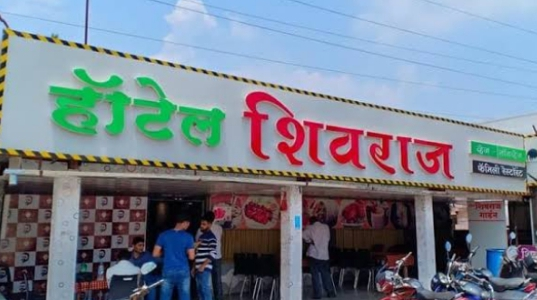
Other Restaurants
Kutirudyog Mithai is popular for its Kandi Pedhe and is located in Thane, while Prashant Corner is well-known for its festival sweets, including Modak and Kaju Katli. Shiv Sagar, a legacy establishment, serves authentic Maharashtrian cuisine and is famous for its traditional thali featuring dishes like Aamti (lentil curry), Pithla (chickpea curry), and seasonal vegetables. MH 09 Shetkari specializes in non-vegetarian Maharashtrian dishes, offering a range of seafood and meat preparations in a traditional setting. Malvan and Kokani Haus showcase the diverse culinary influences in Thane, offering Malvani, Konkani, and other regional Maharashtrian specialties. Gokhale Upahar Gruha is known for its home-style dishes, making it a popular spot for authentic local cuisine. Additionally, Thane features several South Indian breakfast places and popular street food options such as Amruta Pav Bhaji, Rajmata Vada Pav, Gajanan Vada Pav, and Shegaon Kachori.
Local Worker Cooperatives / Self Help Groups
Notable among local worker cooperatives and self-help groups in Thane is the Sukh Sandesh Women's Self-Help Group, which specializes in making popular Maharashtrian sweets and snacks. Their product range includes Puran Poli (sweet flatbread), Rava Laddu (semolina sweet balls), Karanjya (sweet dumplings), Medu Vada (savory doughnuts), and Shankarpali (sweet crisps). Another prominent group is the Khandoba and Jivdani Women's Self-Help Group. This SHG has diversified its production to include both food items and household goods. On the culinary front, they produce papad (thin crackers), papadya (a variant of papad) and various pickles. Additionally, they craft patraval (leaf plates) and glass items used in local events and ceremonies.
Last updated on 22 July 2025. Help us improve the information on this page by clicking on suggest edits or writing to us.